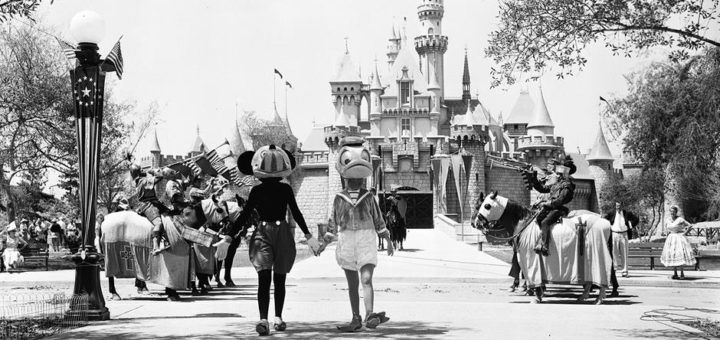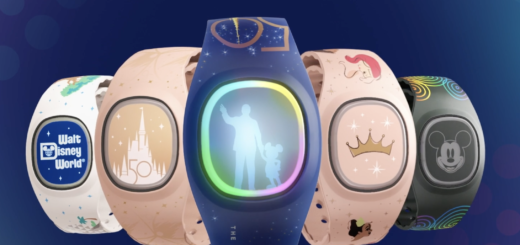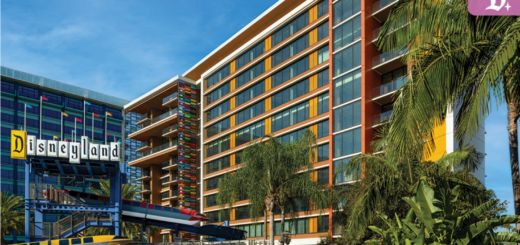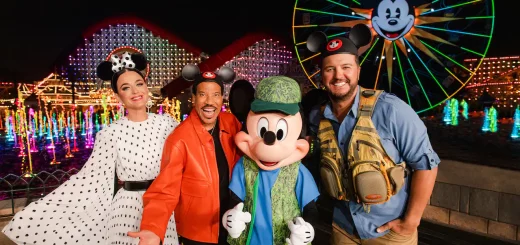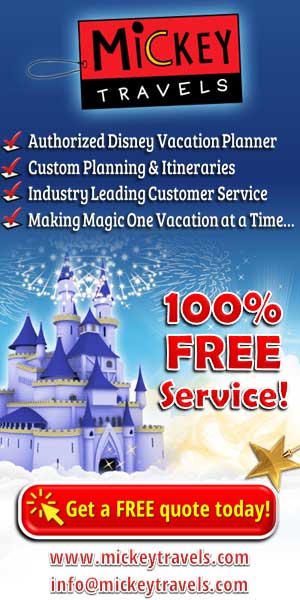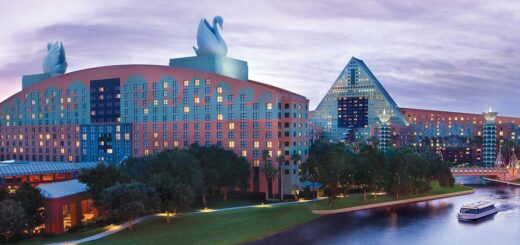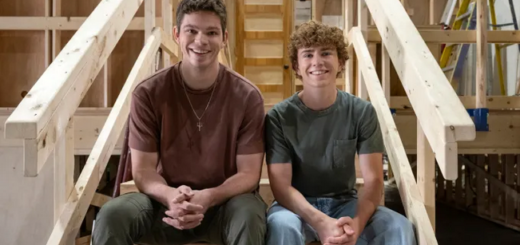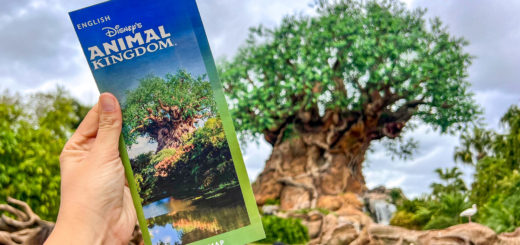Disney by the Decade: The 1950s Part II — Disneyland’s Second Opening
How do you take The Happiest Place on Earth and make it even better?
This question drove Walt Disney during the late 1950s, leading to the introduction of the world’s first theme park monorail and other innovations.
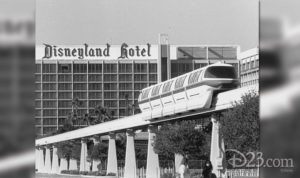

Photo: D23
While Disneyland opened in 1955, the second half of the decade defined the future of theme parks nearly as much.
With the creation of Disneyland, Walt Disney reaffirmed that he could do anything. But the plussing of Disneyland is his true legacy.
Very Good…but Not Perfect
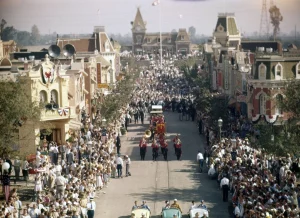


Loomis Dean / The LIFE Picture Collection via Getty
When Disneyland opened, nobody had ever tried anything like it prior to that point. As such, it wasn’t perfect.
Ever the perfectionist, Walt Disney was acutely aware of this fact. And it bothered him.
Over his years as a business tycoon, Disney learned that later iterations of a manufacturing process are what lead to greatness. That premise applies to entertainment as well.
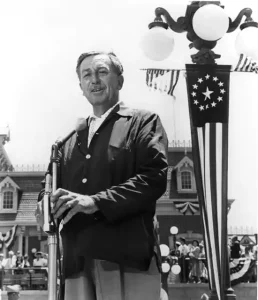

Photo: Disney
The entrepreneur had gained this knowledge the hard way. As a reminder, Disney’s first beloved animated character isn’t the one everyone knows.
After some vicious lessons in licensing and trademarking, Uncle Walt spent an entire cross-coast train trip gritting his teeth at what he had lost.
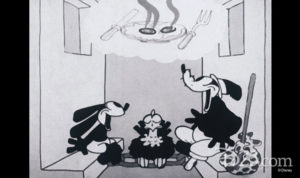

Photo: D23
Someone else took full ownership of his creation, Oswald the Lucky Rabbit.
For many creators, this setback would have doubled as the end of a promising career.
Remarkably, Disney used the downtime to invent Mickey Mouse instead.
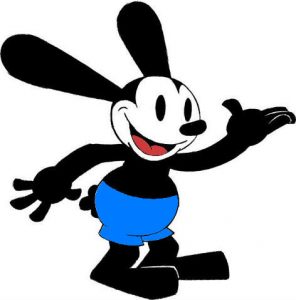

Photo: Disney
Not coincidentally, most conversations regarding Oswald the Lucky Rabbit require explanation. Everyone on the planet knows Mickey Mouse.
You learn more about how to do something the right way via repetition. And Walt Disney applied this to The Happiest Place on Earth as well.



Loomis Dean / The LIFE Picture Collection via Getty
After two years in operation, Disneyland had established new standards for tourism. The park’s early attendance numbers underscored this point.
Disney had optimistically projected that five million guests would arrive during the first year.
Critics derided those numbers as wildly unlikely, but they proved reasonable. Disney claimed its five millionth guest after 14 and a half months in operation.
Walt Disney Was Never Satisfied
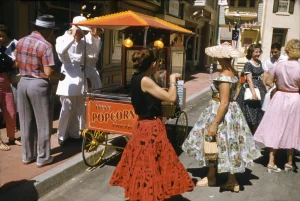

Photo by Loomis Dean/The LIFE Picture Collection via Getty Images)
Disneyland PR statements trumpeted the fact that major celebrities of the era, like Debbie Reynolds, Eddie Fisher, Frank Sinatra, Lana Turner, Danny Thomas, and Rita Hayworth, had all visited.
Early in its existence, Disneyland was the place to be…and to be seen.
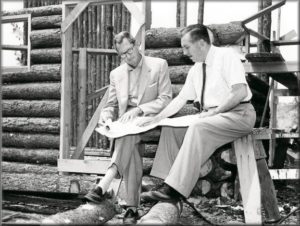

Photo: DESIGNING DISNEYLAND
Still, something didn’t sit right with Walt Disney. He knew that the Happiest Place on Earth needed more.
Nowadays, we take theme park expansion for granted. In the 1950s, people were still learning what a theme park was.
Nobody went to Disneyland in 1955-1957 and thought, “This isn’t enough.”
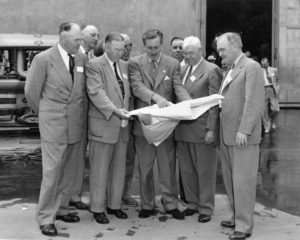

Photo: DESIGNING DISNEYLAND
Instead, they believed they’d witnessed the culmination of generations of storytelling. Guests felt honored just to be there.
Whenever someone complained, Walt Disney somehow heard every word, though.
When a customer dismissed the idea of riding Jungle Cruise a second time as pointless, he bristled.
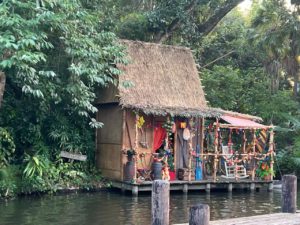

Ever the businessperson, Disney understood that he’d need repeat business to keep Disneyland afloat. It was a wildly expensive business operation.
Some of those first five million guests had no intention of returning anytime soon. Disney needed to incentivize them to do so.
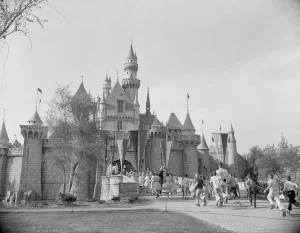

Bettmann Archive
Part of that involved a differing approach. For example, Disneyland closed on Mondays during its first year in operation.
The park took that approach to ensure that cast members could perform attraction maintenance methodically away from the watchful eyes of park guests.
If not for that practice, Disneyland probably could have met its goal of five million visitors during the first year.
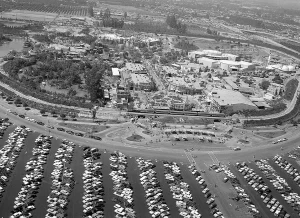

Associated Press
Walt Disney recognized this fact but was far from satisfied. Instead, he had settled on a simpler goal: world domination.
More specifically, the visionary wanted to dominate the theme park industry…forever.
The First Expansion
By 1956, Disney was already saying the following:
“We must build Disneyland into an attraction that will never be in competition with anything else.
“It must be made impossible to duplicate; we want to spread the word about Disneyland throughout the entire world to create an international interest.”
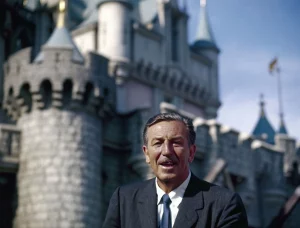

Allan Grant / The LIFE Picture Collection via Getty
You have to hand it to the guy. He had a plan, noticed an opportunity, and brought it to fruition.
In 2019, Disney theme parks claimed attendance of roughly 156 million. The business in second place, Merlin Entertainments, managed 67 million.
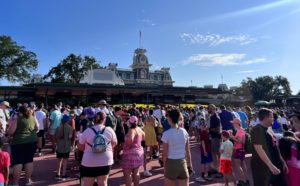

Crowds at Magic Kingdom
I’ll leave it to you to decide whether you’d describe theme parks as an oligopoly or a monopoly. Either way, Disney is objectively the industry’s best.
Before that could happen, Disneyland needed to establish dominance in a way that its creator didn’t believe had happened yet.
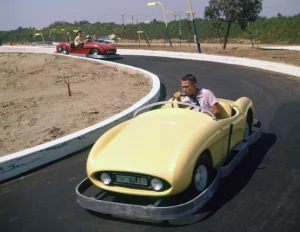

The LIFE Picture Collection via Getty
Sure, Disneyland was operating more than 35 attractions after two years in business. But it wasn’t enough.
Walt Disney already expressed frustration that attendance levels weren’t expanding at the rate he desired. He felt that the park needed more oomph.
The statistics didn’t necessarily support this concern, as the “kiddie” park hosted more than three times as many adults as children.
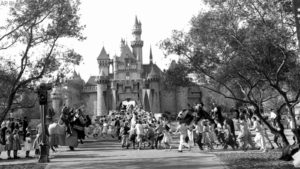

Photo: ABC 7
Also, 32 percent of the park visitors were returning customers, which should have alleviated Disney’s worry about repeat business. But it didn’t.
Walt Disney chose to expand the parks to make them more intriguing…and there’s where he once again proved he had his finger on America’s pulse.
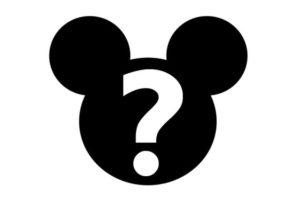

Photo: Playbuzz.com
Disney attendance suddenly slipped toward the end of 1957, with visitor totals declining more than half on some days.
The park needed something new, and guests would receive that bountiful harvest in June 1959.
That’s when Disneyland introduced multiple new rides and designated them with a new, empowering title. They were the first-ever E-ticket rides.
The First E-Ticket Ride
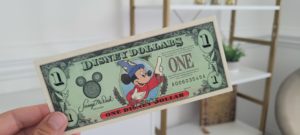

Photo: Jenn Scranton
During the early days of Disneyland, guests could enter the park for just a dollar. However, they couldn’t ride anything for that price.
Instead, customers purchased ticket booklets to experience all the attractions.


Photo: wikipedia
Disney subdivided the tickets into categories to establish their overall perception.
For example, Peter Pan’s Flight was a C-ticket ride in 1955. There’s actually a valuable commemorative pin of this ticket you’ll occasionally find on eBay.
Until 1959, the D-ticket represented the best possible Disney attraction, one that cost the most to ride.


Photo: Getty
Then, Walt Disney spent millions of dollars building three new attractions, a decision that fundamentally altered the theme park lexicon forever.
While promoting Disney stories internationally, the Disney brothers had fallen in love with European vacations.
They’d take their wives on these trips, and the families would delight in the international cultures.


Photo: Disney
You can find family pictures of these trips at Disney’s Riviera Resort.
One of the most remarkable stories involved Walt Disney’s obsession with monorails, a novel form of transportation in places like Wuppertal, Germany.
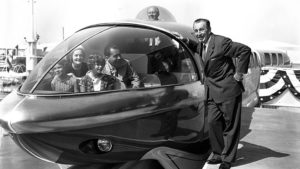

Photo: D23
That particular monorail uses a hanging suspension, so it’s not the one you’d recognize by sight. Still, Walt Disney loved it and knew children would as well.
The entrepreneur determined that Disneyland should host a monorail.
As you might imagine, these weren’t easy or cheap to build in the 1950s. Disney didn’t care, though.
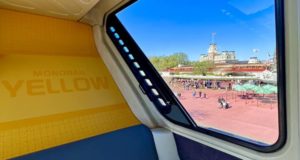

The visionary believed that monorails represented the future of American transportation…and he might have willed that thought into existence if not for his death in 1966.
Instead, in 1959, the park introduced the Disneyland Monorail as one of three new attractions. And it was so good that it earned its own category.
Yes, the Disneyland Monorail was the first E-ticket attraction! Well, one of them…
The Best Toboggan Ride Ever
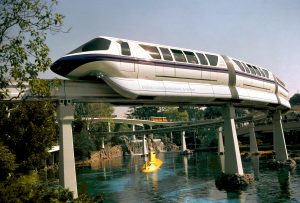

Remarkably, adding an entire monorail track and set of trams wasn’t the only part of the 1959 Disneyland expansion.
Some would argue it wasn’t even the biggest part.
Do you know that giant mountain in the park, the one that looks like the Matterhorn? Yeah, that didn’t exist in 1955.
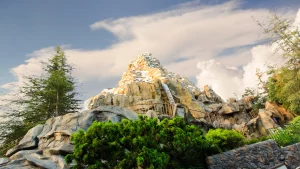

Walt Disney built that as a companion to a 1959 film, Third Man on the Mountain.
Disney chose the city of Zermatt, Switzerland, as the movie’s filming location.
While there, Disneyland’s creator drew inspiration for an idea he’d had for an attraction.


Image credit: Mark Eades, Orange County Register
Ever the inventor, Disney desired a toboggan ride down the side of a mountain.
For thematic purposes, he built an entire mountain to enhance the immersion.
During the early days of the Disneyland expansion, climbers would scale Disney’s Matterhorn, just as they would the real mountain.
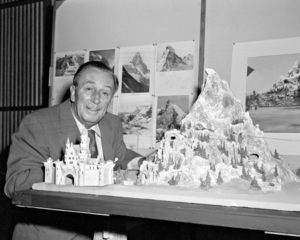

Photo: Disney Archives
You can imagine how much the visual of that man-made mountain impressed guests during the first decade of Disneyland.
A Submarine Voyage
These joyful customers happily paid the E-ticket price of $3.50 for ten tickets, three of which allowed them to ride the new expansion attractions.
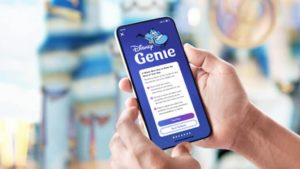

Photo: Park Savers
Even in today’s economy, that’s a relatively modest cost of about $37, which isn’t much more than the daily price of Disney Genie+ as I type this.
For that money, tourists slid down the mountain and rode a bullet train in the sky. But that wasn’t all. They also traveled under the sea.
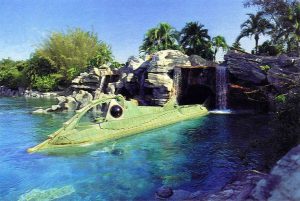

Photo: WDW Magazine
Buoyed by the popularity of 1954’s 20,000 Leagues under the Sea, Disney embarked on a plan to transport Disneyland guests underwater.
Disney created an entire backstory for this ride, Submarine Voyage. The people onboard would sail under the polar ice cap in the Arctic Ocean.
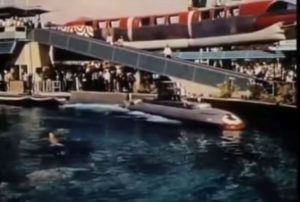

Photo: wdw magazine
In describing this creation, park officials called the ride carts for Submarine Voyage “one of the world’s largest peacetime submarine fleets.”
Also, a construction team had to build an entire multi-part lagoon for this.
While guests never dipped into the water the way they believed, this sub did, in fact, voyage around an entirely new part of Tomorrowland.


Photo: D23
I would argue that Disney suffered a rare theming misstep with this one, though.
The backstory established Submarine Voyage’s timeline as 1958, a strange thing to do for a ride that wouldn’t open until 1959…in Tomorrowland.
Coincidentally or not, Submarine Voyage is the only one of the three E-ticket expansion rides from 1959 that doesn’t remain to this day, at least not in its current form.
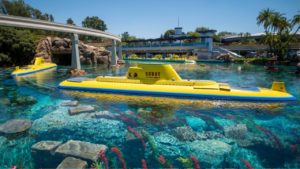

Photo: Disney
Disneyland closed the original Submarine Voyage in 1998 for innumerable reasons, most notably its flagging appeal.
Then, park officials reopened a modified version of the attraction in 2007 as Finding Nemo Submarine Voyage.
The Legacy of the Disneyland Expansion


Photo: D23
As part of Disneyland’s first significant expansion, it also featured an extended version of Autopia and the updated Motor Boat Cruise.
WaltDisney.org fittingly describes the arrival of these new attractions as Disneyland’s Second Opening.


Photo: Nate D. Sanders Auctions, Los Angeles/D23
The changes were that significant in terms of new attractions and reinvigorating park attendance.
A total of 600,000 more guests visited in 1959 than in 1958, bringing Disneyland back to that magical level of five million annual visitors.
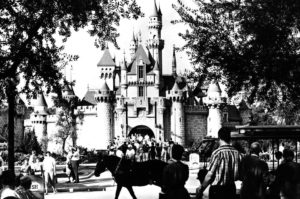

Photo: Getty
By 1964, the baseline was closer to six million, with an average of 6.3 million from 1964-1966. That’s 27 percent more guests in seven years.
More importantly, the success of Disneyland’s first expansion functioned as proof of concept. It would directly lead to another expansion.
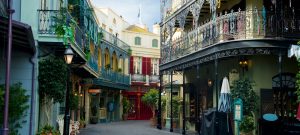

You know this place as New Orleans Square, and it’ll provide part of the backbone for Disney by the Decade’s 1960s discussion…well, half of it.
Once again, we’ll have two parks. The first one will involve Disneyland and other aspects of the Disney empire.
The other conversation centers on something called the Florida Project. So, yeah… The 1960s were a seminal time for The Walt Disney Company.
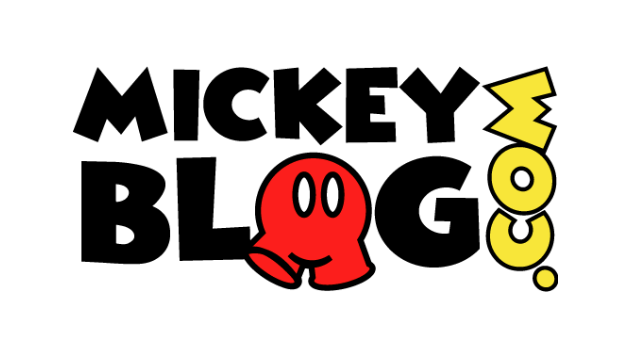

Photo: MickeyBlog
Thanks for visiting MickeyBlog.com! Want to go to Disney? For a FREE quote on your next Disney vacation, please fill out the form below, and one of the agents from MickeyTravels, a Diamond Level Authorized Disney Vacation Planner, will be in touch soon!
Feature Photo: Los Angeles Examiner/USC Libraries/Corbis via Getty Images


